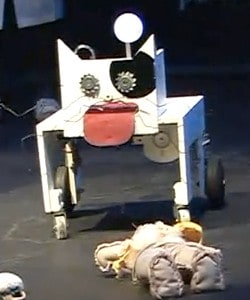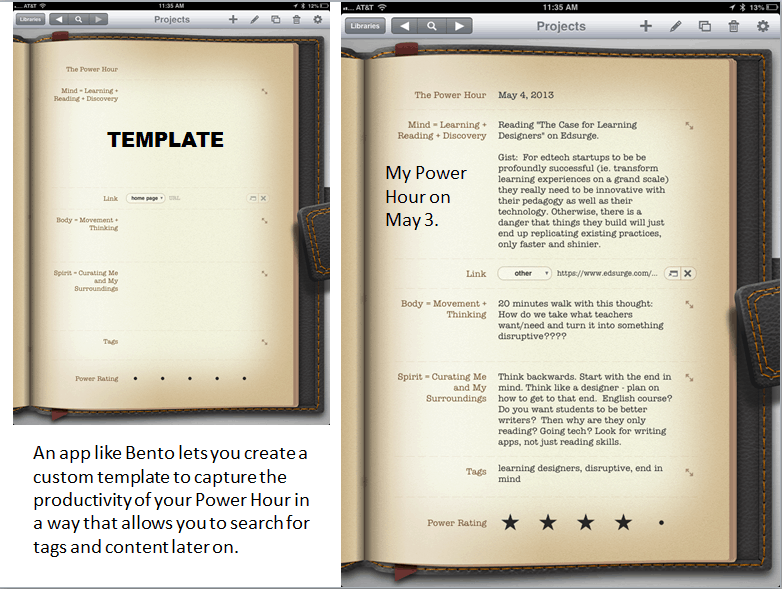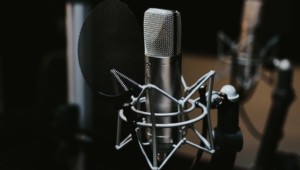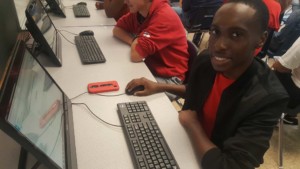The Power Hour – Curate Yourself

All the time is a good time to appreciate teachers, but especially this week! We need to take care of teachers both personally and professionally. Teachers, too, need to take responsibility for their professional and personal development. The teaching profession makes it easy to become a “bot.” We’re given a certain amount of time to plan. We’re given a certain amount of time for lunch. We’re given our schedules and parking spots. We’re given our student rosters and duty rosters, curriculum guides and pacing guides, student rules and teacher policies. It’s easy to just plug and chug. Being a bot gets you by. Being a good bot is rewarded.
But we don’t really want to be bots. We’re better than that. This isn’t us:

It isn’t our students either.
The most liberating and exhilarating thing in your professional career . . . your teaching career . . . is that moment when you decide to take control.
One way to reclaim our professional life is with the Power Hour. The Power Hour is an hour that you own. It’s an hour that improves you. It’s a chance to curate . . . YOURSELF!
The Power Hour has its roots in the Greek idea of mind, body, and spirit. Unlike the ancient Greeks, though, who moved leisurely in long flowing robes, the Power Hour is packed with intensity and launched with Red Bull.
The original Power Hour was defined as 20 minutes of reading, 20 minutes of exercise, and 20 minutes of meditation. That alone is pretty cool for self improvement, especially if done with intention and regularity. We need to hack this plan, though, for education. “Meditation” might be a questionable goal in an educator’s work plan. And yes, leadership, this is for the work plan.
Nevertheless, we have a lot of flexibility here. Let’s just make the hour intentional and charged with productivity that curates you.
Here’s how the Greek concept might play out in the Power Hour:
Mind – Use this time to gain new information. This would be dedicated learning that helps you professionally. Think blogs, books, videos, website, or working with a new app that you’re not familiar with. If you’re a Flipboard user, check this out on your mobile device. Regardless of how your collect or access it, this portion of the hour deals with new content.
Body – This portion of the Power Hour isn’t your weight loss plan or how to be a year younger. (There’s another time in the day for that!) This is exercise the stimulates the brain. It’s movement. Get out of that chair, away from the computer, away from the teacher’s lounge. You will find movement and oxygen intake here, but don’t go into blank slate mode. Take your knowledge with you. Work with it as you move. Stimulate thought, brainstorm ideas.
Spirit – Answer these questions: How do you use today’s learning professionally? Can you take it into the classroom? Is it just for your own professional portfolio? How disruptive can you get with today’s learning? Can you use it in a transformative way?
The Power Hour runs a single concept or idea through your own personal mind, body, spirit algorithm. When you’re done with your Power Hour, curate it digitally. Don’t let this just be a mind exercise that fades away each day after completion. The output will be greater than just the mind part. Augment your experience with technology. Humans augmented with technology become SuperHuman. The SuperHuman educator will always have the advantage over the advanced teacher or even the advanced bot.
For my own curation, I’m using Bento, an iPad/iPhone app:
You can do the same, though, with a Google form. Use anything that lets you curate, tag, catalog, search, and retrieve, which is everything you’ll need for basic curation. In addition to claiming an hour a day for yourself, you need to customize the Power Hour to fit you. Start with the basic premise (mind, body, spirit), and then tailor to suit.
Leadership should facilitate the Power Hour. Let teachers own a piece of their day that’s dedicated to their development. They are going to think, stay fit, and pay it forward. That’s a lot of wins there. This is similar to Google’s 20% Project, but the Power Hour is, in essence, about self-curation with the expectation that the time used will pay itself forward in professional development and ultimately student outcomes. If done properly with the right leadership support, this should be a favorite time of day for teachers, and not because it’s only about them, but because it makes them better in a way that impacts their students.
Leadership needs to get the Power Hour on the school or district calendar. If it’s on the calendar or in a work plan, then there’s greater buy-in. Imagine ideas generated by everyone and improvement taking place everywhere. This happens because the Power Hour focuses on the mind. Thinking. Mediation. Metacognition. All of the ethereal ways that we use to generate ideas.
Teachers should master and model in the classroom. The classroom iteration of this is called the Genius Hour. The Genius Hour empowers students to explore topics that they are passionate about. This gives them ownership of their education and a buy-in with what’s going on in the classroom. Check out everything about the Genius Hour here.
Note: “The Power Hour – Curate Yourself” blog post was generated in my April 27 Power Hour.






0 Comments
Leave a Comment
Your email address will not be published. All fields are required.